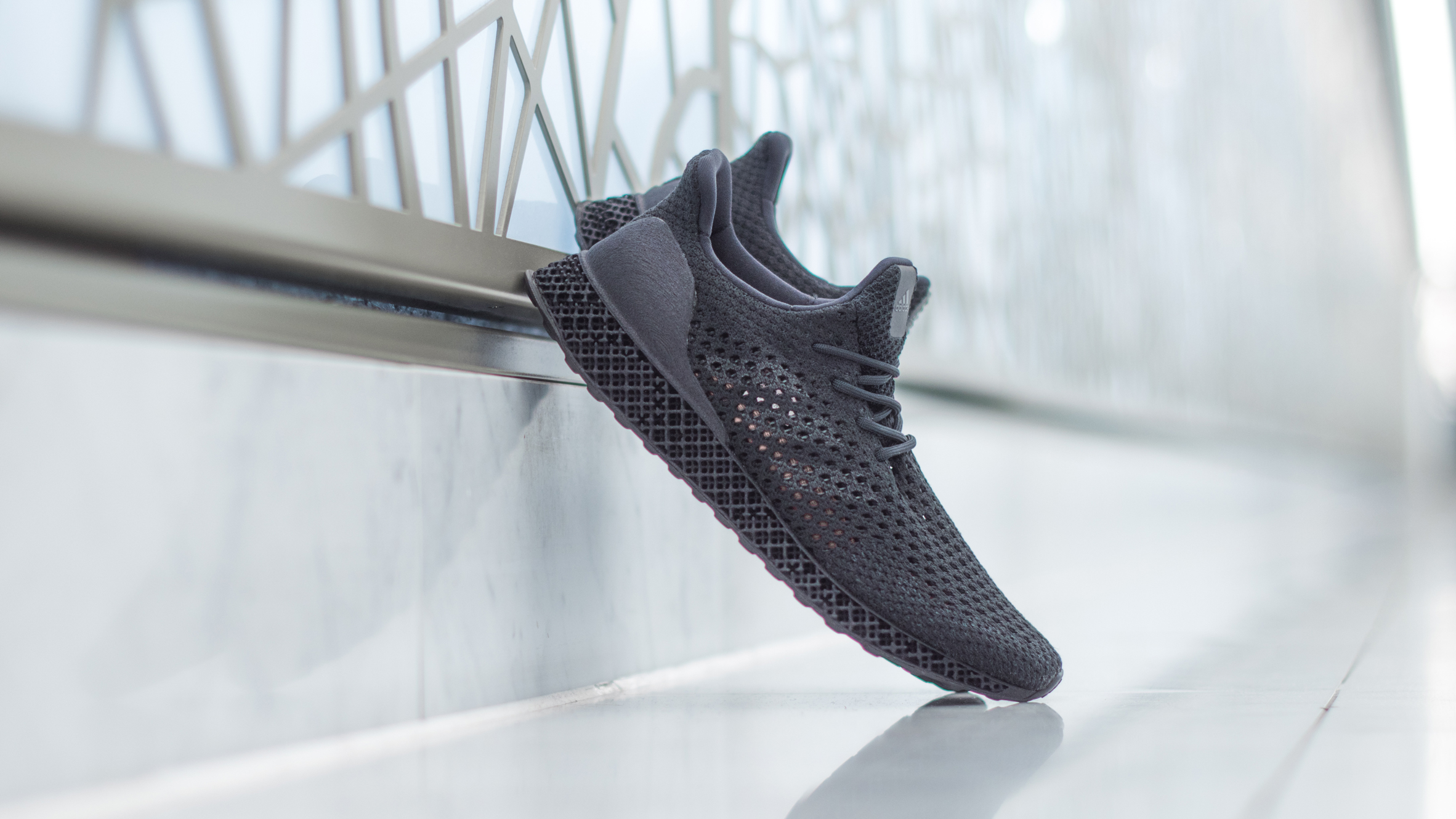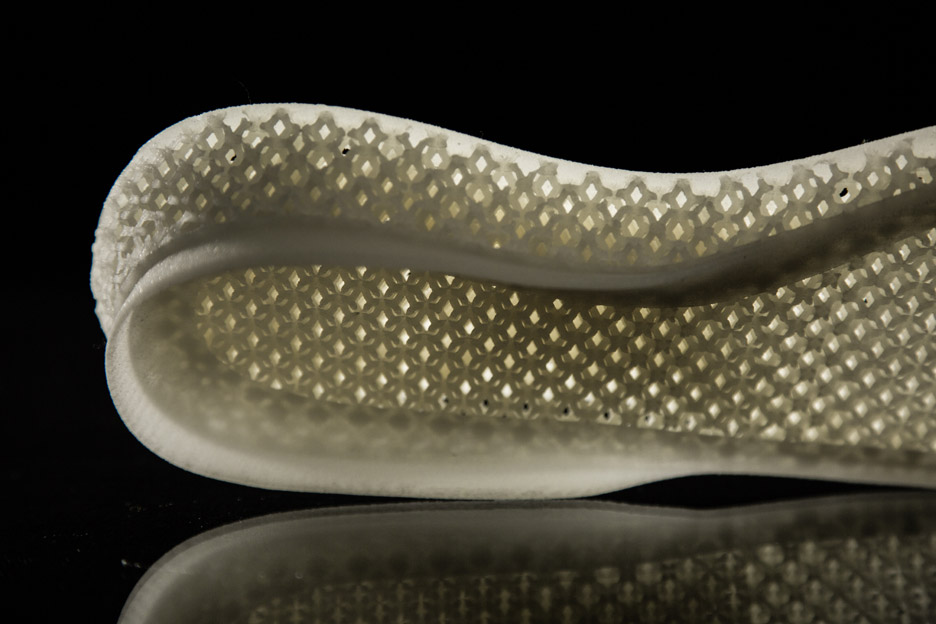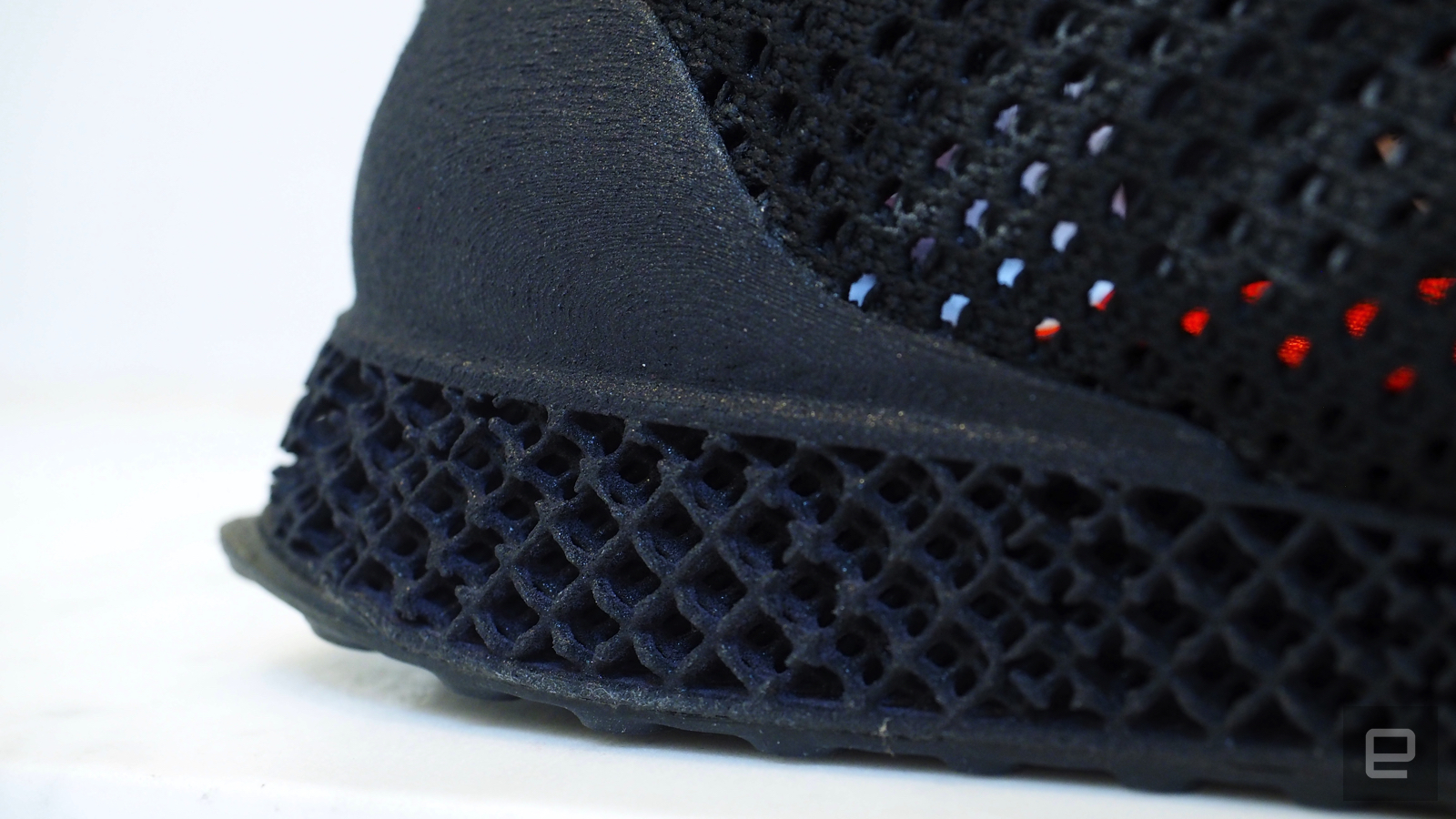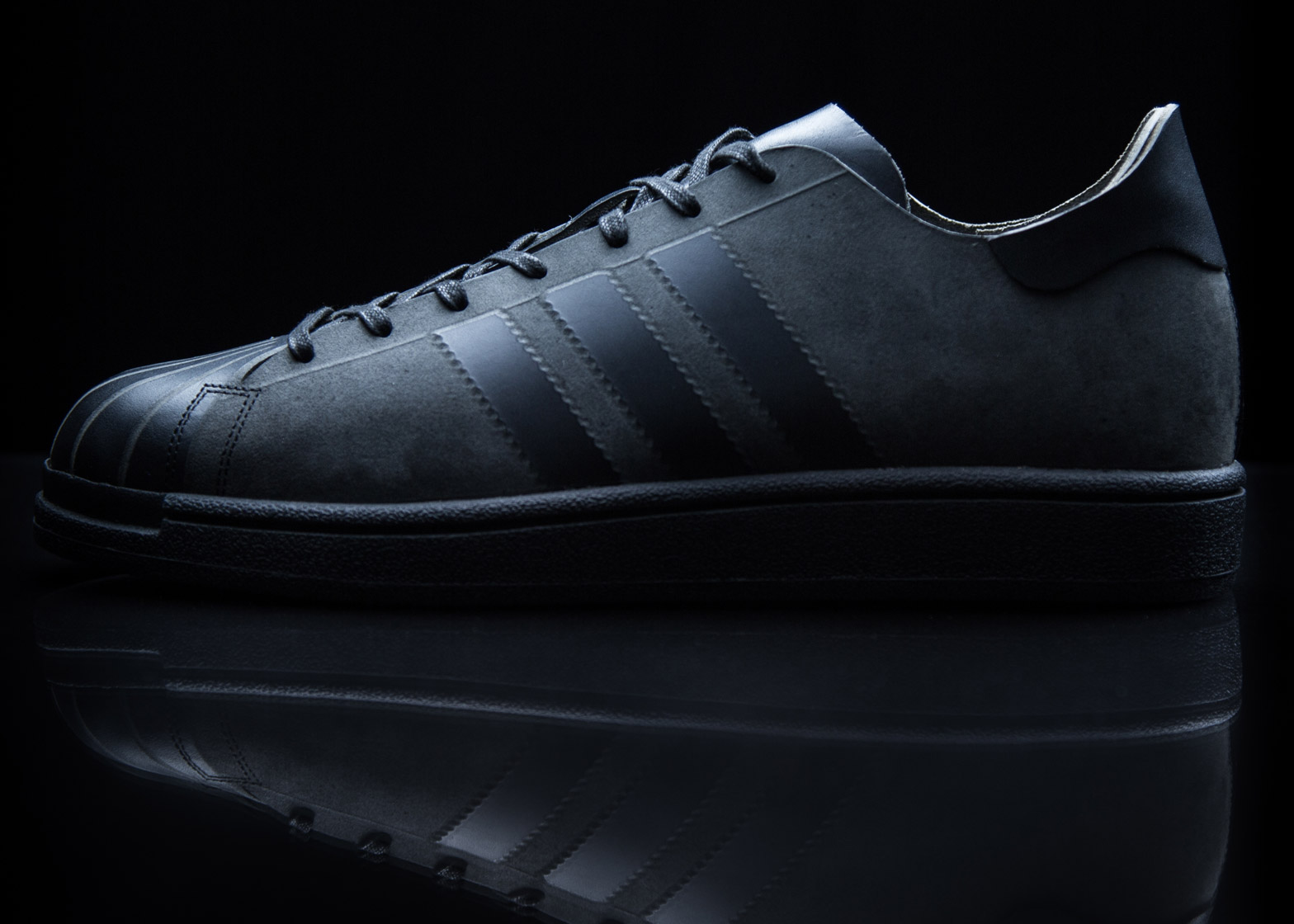3D-printed Adidas trainers go on sale
Adidas has released a limited-edition run of its 3D-printed trainers, which were worn by a number of athletes at this year’s Rio Olympics.
The 3D Runner goes on sale today at stores in London, New York and Tokyo – marking the first time that Adidas shoes incorporating 3D-printing technology have been available to purchase.

Alice Morby, Dezeen 15 December 2016
The shoe features many similar elements to the Futurecraft trainers unveiled in 2015, which had 3D-printed soles to mimic runners’ footprints.
The shoes’ midsole is made from a 3D-printed web-like structure, with denser zones in high-force areas and less dense zones in low force areas.

A 3D-printed heel counter, the plastic insert used to reinforce the heel cup of a shoe, is integrated into the midsole – negating the need for glueing or stitching.
The upper of the shoe is made using Adidas’ Primeknit technology, meaning that it is both light and flexible.

Adidas Biosteel Trainers. The fibres, made by German biotechnology company AMSilk, are completely biodegradable. They are also said to be 15 per cent lighter than other conventional synthetic fibres, and Adidas claims they have the “potential to be the strongest fully natural material available”.
The 3D Runner was first unveiled by Adidas in August at the Rio Olympics when a number of athletes, including Team GB heptathlete Jessica Ennis-Hill and USA swimmer Allison Schmitt, wore them during the medal ceremonies.
Adidas has become known for pushing the boundaries of sneaker innovation, gaining it a place on the inaugural Dezeen Hot List, ahead of Nike.
This year, it has unveiled the Futurecraft Tailored Fibre trainers, constructed through an industrial sewing technique used to manufacture heated car seats, and a version of the brand’s Superstar trainer featuring a seamless upper made from a single piece of leather.
| Alexander Taylor designs tailored Fibre shoes for Adidas. London designer Alexander Taylor has developed a technique that allows Adidas trainers to be modified to the individual’s specific and unique requirements. Futurecraft Tailored Fibre, Taylor’s latest trainer design for the sportswear brand, features uppers made from a single piece of fabric, that can be customised for each wearer. Dezeen. YouTube Feb 16, 2016 |
Earlier this month, the brand revealed it would be making one million pairs of its ocean plastic shoes in 2017, with the ultimate ambition being to eliminate virgin plastic from its supply chain.
Speaking to Dezeen last year, Adidas executive board member for global brands Eric Liedtke said that the company aims to use design to challenge its arch-rival Nike as the dominant brand in the American market.
“I need to overcompensate in America from a design point of view,” he said. “I need to get this right [in the USA], because we’re not having the success we are in Europe right now.”
Source Dezeen
| Taking a walk in Adidas’ 3D-printed running shoes |
You thought the $333 price was high? Wait until you see how much they cost on eBay.

Edgar Alvarez, Engadget December 21, 2016
It’s hard to believe it was only last year when Adidas revealed its first 3D-printed shoe concept. But the German sportswear giant is moving fast with its Futurecraft project, a collection of innovative footwear that also includes biodegradable sneakers. The latest in this line is the Adidas 3D Runner, which features a midsole and heel tab created from 3D-printing materials. Primeknit, the same fabric used on Three-Stripe models such as the Yeezy and Ultra Boost, makes up most of the rest of the silhouette.
The sleek, all-black shoe was actually made available to people in New York City, London and Tokyo a few days ago for $333, although it was a limited-edition release. Adidas didn’t disclose how many pairs were up for grabs exactly, but they’re so rare that your only chance to get them now is on eBay or another reseller platform for anywhere between $4,500 and $6,000. That’s sneakerhead culture in a nutshell.
I had the chance to try out the 3D Runner and came away fairly impressed, mostly because the shoes were much more comfortable to wear than I expected. I assumed the 3D-printed midsole would make them feel stiff as I walked or took some running strides, but this wasn’t the case. The day I tested the sneakers I happened to be wearing an Adidas pair of Ultra Boosts – which, if you own one, you know it’s like having your feet rest on a pillow – and I didn’t get the impression the 3D Runners were much different. The extra-thick insole probably has something to do with that.
I did notice the 3D-printed model was much lighter, though, which was likely thanks to the plastic materials used across the midsole. Adidas says its 3D Runners are designed to be a performance shoe first and foremost, so they can be treated like any other pair. Nike’s trying to drive home a similar point with the self-lacing HyperAdapt 1.0 – which is to say, don’t let the tech hold you back from putting these through regular wear and tear.
Unless, of course, you’ve forgotten that sneakers are meant to be worn and aren’t for collecting dust on a pedestal.
Source Engadget
Also see
Adidas launches trainers made from ocean plastic with Parley for the Oceans Dezeen

